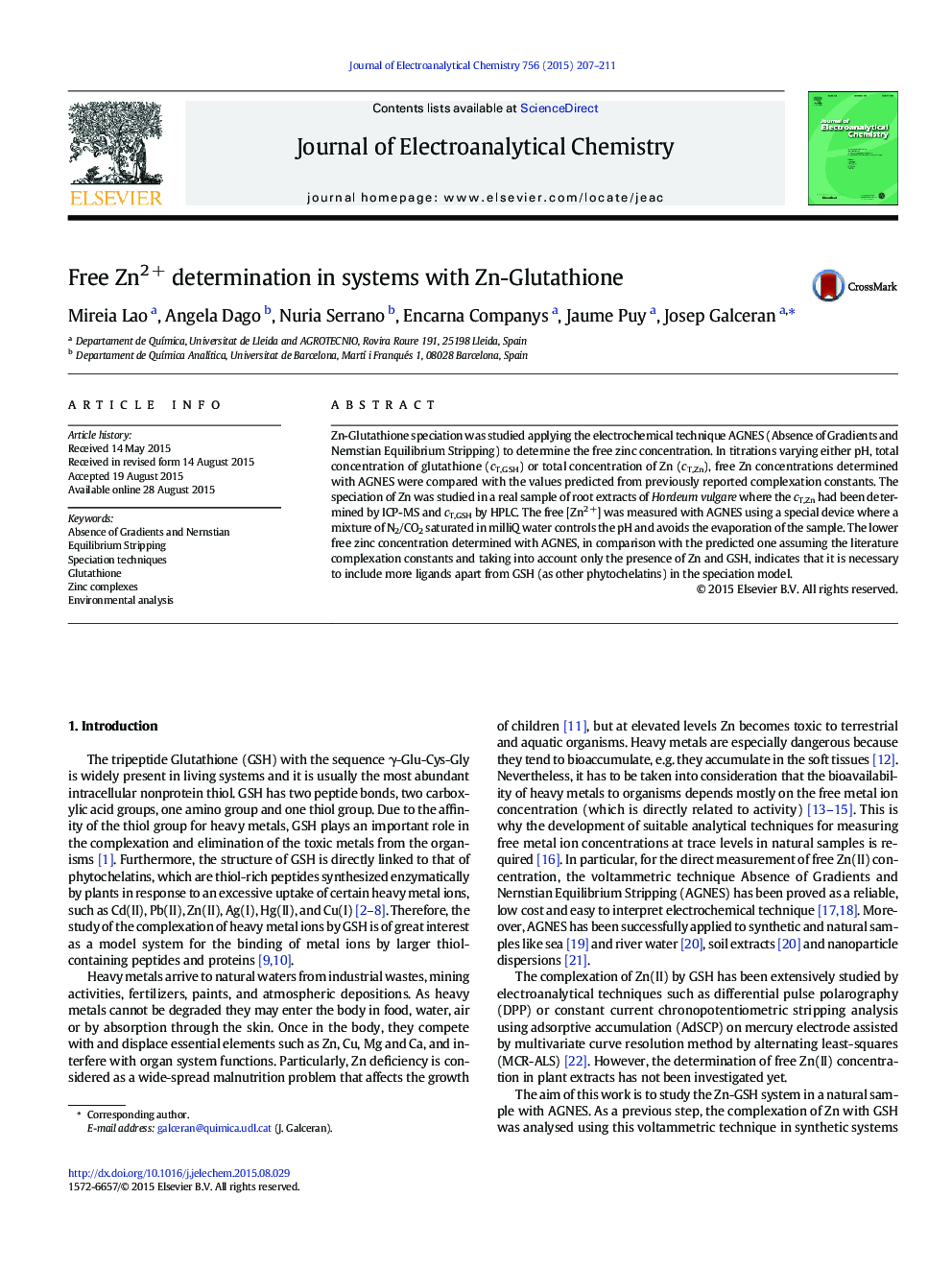| Article ID | Journal | Published Year | Pages | File Type |
|---|---|---|---|---|
| 218308 | Journal of Electroanalytical Chemistry | 2015 | 5 Pages |
•AGNES technique allows the discrimination between models of Zn-GSH complexation.•A mixture of N2 and CO2 has been used to control the pH.•Free zinc concentration in root extracts of Hordeum vulgare was analysed with AGNES.•Glutathione was quantified with HPLC and electrochemical detection.
Zn-Glutathione speciation was studied applying the electrochemical technique AGNES (Absence of Gradients and Nernstian Equilibrium Stripping) to determine the free zinc concentration. In titrations varying either pH, total concentration of glutathione (cT,GSH) or total concentration of Zn (cT,Zn), free Zn concentrations determined with AGNES were compared with the values predicted from previously reported complexation constants. The speciation of Zn was studied in a real sample of root extracts of Hordeum vulgare where the cT,Zn had been determined by ICP-MS and cT,GSH by HPLC. The free [Zn2 +] was measured with AGNES using a special device where a mixture of N2/CO2 saturated in milliQ water controls the pH and avoids the evaporation of the sample. The lower free zinc concentration determined with AGNES, in comparison with the predicted one assuming the literature complexation constants and taking into account only the presence of Zn and GSH, indicates that it is necessary to include more ligands apart from GSH (as other phytochelatins) in the speciation model.
Graphical abstractFigure optionsDownload full-size imageDownload as PowerPoint slide
